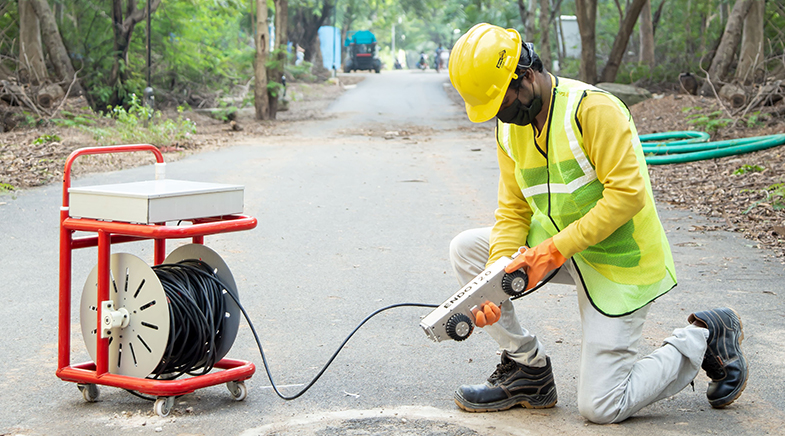Sealing the leak
-
- from Shaastra :: vol 03 issue 03 :: Apr 2024

Tested on rats, pigs and human-derived tissues, new material promises watertight sealing of tissues.
Researchers have developed a bioadhesive hydrogel that can seal the tissue surrounding the brain and spinal cord following surgery. It could supplement, or replace, stitches typically made to close the dural tissue enveloping the central nervous system after a surgery or traumatic injury.
For a successful neurosurgery and recovery, the dural tissue must be sealed such that the cerebrospinal fluid does not leak out. Leaking of the fluid is a life-threatening and common surgical complication. Apart from sutures, methods for reconstructing the dural tissue involve the use of liquid sealants, collagen scaffolds or tissue grafts. But all of these methods have limitations, be it in their deployment or properties of the material.
Now, a 'dural tough adhesive' (DTA), result of a multi-institute collaboration, has been shown to overcome these limitations. The researchers have tested the sealant's properties against commercial sealants. The findings were published in Science Translational Medicine in March (bit.ly/bioadhesive-gel).
The researchers observed zero leakage of the cerebrospinal fluid towards the end of the surgery in pigs.
DTA is both stretchable and resistant to fractures – properties that will help the material withstand pressure created by the cerebrospinal fluid, which ranges from 7 to 15 mmHg in healthy people but can go much higher in those suffering from medical conditions.
Using tissues derived from pigs, the researchers tested these mechanical properties of DTA and its ability to attach to wet tissue surfaces. "Given the success of those data, we then moved into biocompatibility study in rats to basically look at any adverse events and how well the materials interact with living tissues," says Benjamin R. Freedman, Assistant Professor at Harvard Medical School, and co-first author of the study. For this, DTA was implanted onto the rats' central nervous system tissue. "The material stayed in place four weeks."
In addition, the researchers introduced DTA into a human cadaver head to test how much pressure it could withstand before failing (an average of 80 mmHg). Freedman and colleagues further demonstrated DTA's use in repairing dural tissue of the spinal cord in live pigs, chosen for its similarities with the human spine. The researchers observed zero leakage of the cerebrospinal fluid towards the end of the surgery.
They are planning on carrying out more tests to get DTA approved for use in humans. "This is just one...of many examples where the technology may be useful inside or outside the body," says Freedman. Some of the other clinical applications of hydrogel materials are in local drug delivery, wound-healing and repairing birth defects of the spine, he says.
Have a
story idea?
Tell us.
Do you have a recent research paper or an idea for a science/technology-themed article that you'd like to tell us about?
GET IN TOUCH














